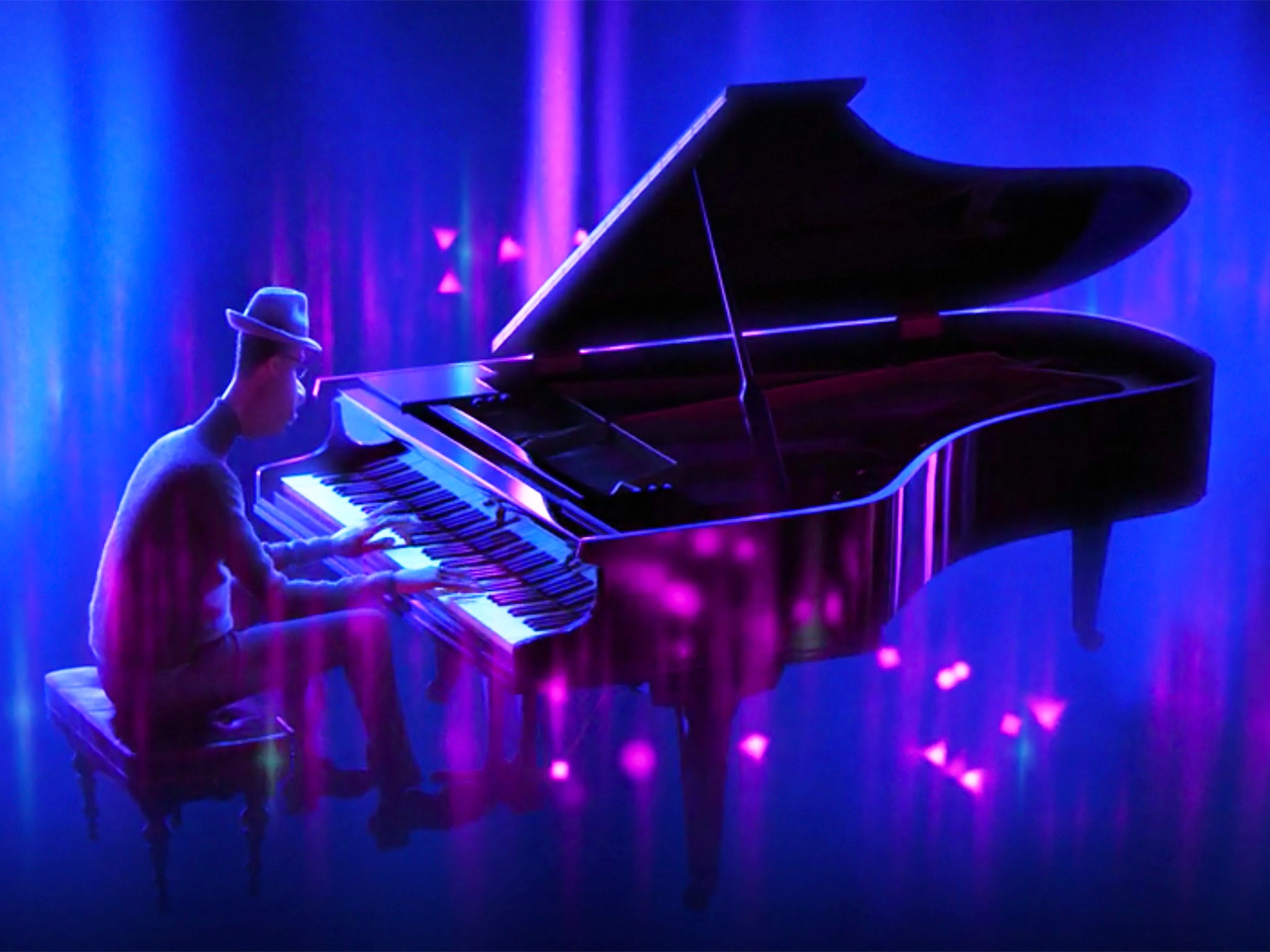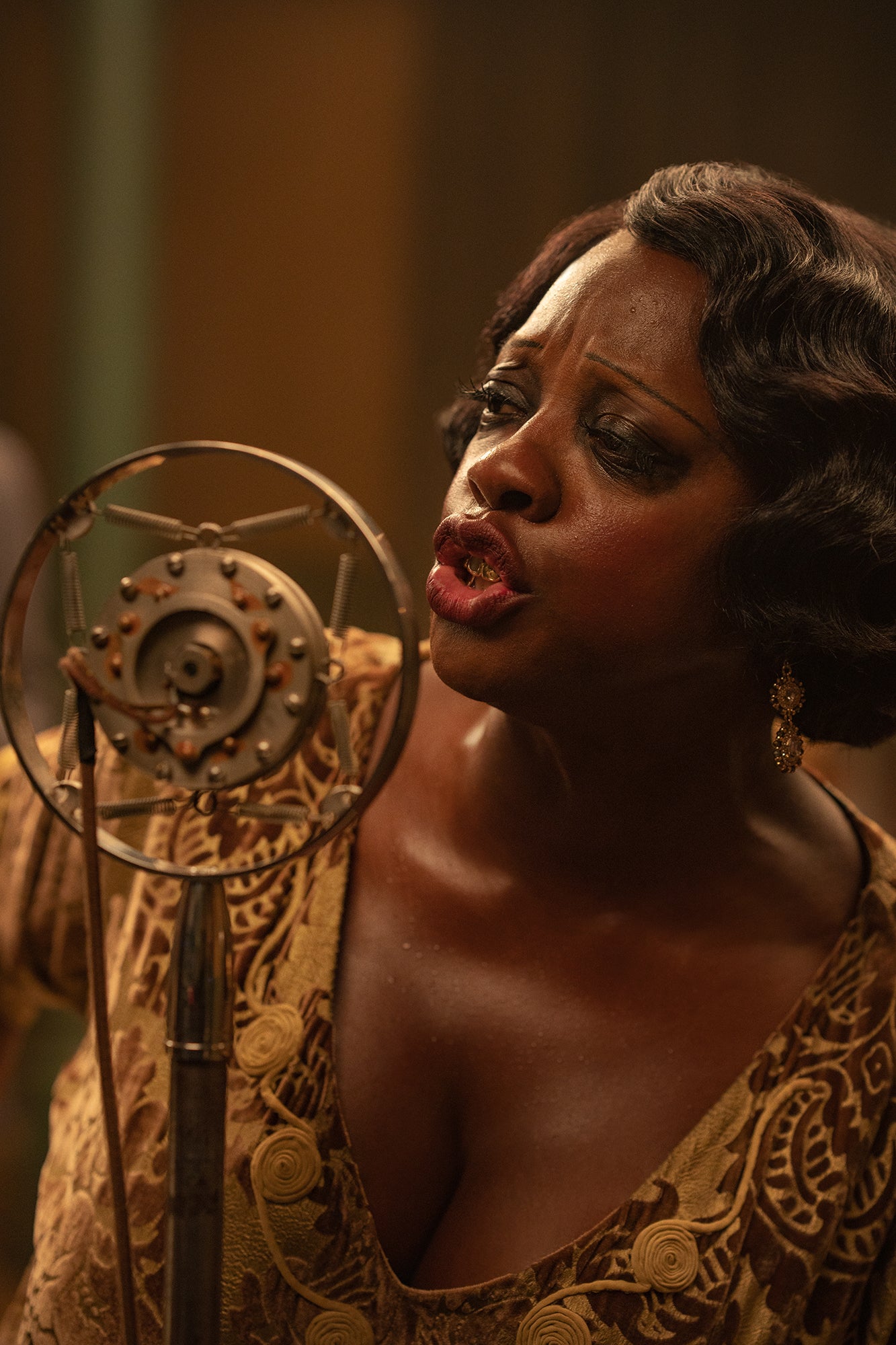Giant steps: Why Soul is the film that finally got jazz right
Jazz has a long history with cinema but few movies had mastered an accurate portrayal of the music and got to its heart until Pixar’s acclaimed animation, says John Lewis

Your support helps us to tell the story
From reproductive rights to climate change to Big Tech, The Independent is on the ground when the story is developing. Whether it's investigating the financials of Elon Musk's pro-Trump PAC or producing our latest documentary, 'The A Word', which shines a light on the American women fighting for reproductive rights, we know how important it is to parse out the facts from the messaging.
At such a critical moment in US history, we need reporters on the ground. Your donation allows us to keep sending journalists to speak to both sides of the story.
The Independent is trusted by Americans across the entire political spectrum. And unlike many other quality news outlets, we choose not to lock Americans out of our reporting and analysis with paywalls. We believe quality journalism should be available to everyone, paid for by those who can afford it.
Your support makes all the difference.Hollywood rarely makes films about jazz music. In the movies, as in life, jazz is something that rumbles on in the background, usually ignored, the backdrop to a tale of love, or crime, or murder, or farce. Jazz is Louis Armstrong performing in a fancy restaurant at the end of Hello, Dolly! as Barbra Streisand tries to woo Walter Matthau. Jazz is Jack Lemmon and Tony Curtis joining Marilyn Monroe’s all-female dance band in Some Like It Hot; it’s Will Ferrell prancing around a restaurant with a flute in Anchorman; it’s the Count Basie Orchestra’s surreal appearance in Blazing Saddles; it’s Tom Cruise in a jazz club in Michael Mann’s Collateral, shooting Barry Shabaka Henley in the face while he’s recounting a Miles Davis anecdote.
Even with Hollywood soundtracks, jazz music can have myriad effects on the audience. It can be unsettling (like Alex North’s quizzical score to A Streetcar Named Desire); or hip (like the genteel bebop band that Burt Lancaster is trying to slander in The Sweet Smell Of Success); or terrifying (Ornette Coleman’s haunting underscore to David Cronenberg’s The Naked Lunch); or dreamily nostalgic (the yearning jazz standards used in countless Woody Allen films). Or, in the latest addition to Hollywood’s jazz canon – the animation Soul – it can be wonderfully, ecstatically life-affirming.
Pixar’s latest critical and commercial hit is set in latter-day New York and is centred around Joe (voiced by Jamie Foxx), a middle-school band teacher who has inspired many students over the years but who longs to be a professional jazz musician in his own right, and who is forced to reevaluate his ambitions after falling down a manhole. More than any live-action movie, Soul manages to (literally) hit all the right notes when it comes to its portrayal of jazz. The painstaking practice required, the mechanics of improvisation, the telepathic relationship between band-members, the rapturous, trance-like, out-of-body experience enjoyed by the musician and audience alike – all are beautifully depicted in the performance scenes, all of which exploit the time-altering possibilities of animation and transport us into higher realms. In a century of cinema, no film has quite managed this.
Jazz and cinema both emerged around the same time and have endured a faintly dysfunctional relationship since the earliest talkie (which just happened to be Al Jolson’s The Jazz Singer in 1927). When jazz was still the popular music of its age, Hollywood often made biopics based on its stars – Benny Goodman, Glenn Miller, Gene Krupa, Nat King Cole, WC Handy, Red Nichols, Tommy Dorsey, Bix Beiderbecke – but they were frequently ridiculous. You wouldn’t expect Hollywood to be exploring the racial politics of jazz in the 1940s and 50s, but these films whitewashed jazz so thoroughly that you’d barely believe that any African Americans were involved. Take 1947’s New Orleans. What was supposed to be a history of jazz told through the life of Louis Armstrong ended up being about the romance between a Mexican casino owner and an opera-singing socialite.
As jazz receded into the margins of American life, jazz biopics started to become studies of emotional turmoil. For 1986’s Round Midnight, director Bernard Tavernier initially sounded out Archie Shepp and Sonny Rollins to play the lead role but decided that both looked far too healthy and well-adjusted to depict a clinically depressed American expat in Paris (loosely based on the saxophonist Lester Young). Tavernier instead used the growling, gangling frame of Dexter Gordon, who added an air of realism by writing some of his own dialogue and narrating his own fatal obsession with his art. Bird, Clint Eastwood’s 1988 biopic of Charlie Parker, is another impressionistic study of the tortured artist, with Forest Whitaker superb as the heroin-addicted genius who died aged 34.
These films were often the result of “the white gaze” – white writers and directors objectifying black artists. Few were made by black filmmakers. That’s something which writer/director Spike Lee attempted to confront in 1990’s Mo’ Better Blues, which presents contemporary jazz as a racialised battle between black musicians and white proprietors (an echo of Francis Ford Coppola’s underrated 1920s-set flop The Cotton Club, made in 1984). But Lee didn’t do the film any favours by enlisting John and Nicholas Turturro to play two absurdly caricatured Jewish nightclub owners, which invoked the wrath of the Anti-Defamation League.
Meanwhile, Don Cheadle, the writer, director and star of 2015’s Miles Ahead, showed that he could make a biopic that was every bit as daft as anything Hollywood churned out in the 1940s – in this case one that transforms Miles Davis into the lead figure in a cartoonish heist movie, attempting to steal back his master tapes from an evil record company.
Miles Ahead arrived just as jazz seemed to be having another Hollywood moment, but there remained issues with how the artform was being portrayed. Released in 2014, the cult hit Whiplash presents jazz as a purely athletic pursuit, a matter of speed and volume; JK Simmons’s Oscar-winning turn as the brutal music teacher might as well be the drill sergeant in Full Metal Jacket. The story was apparently inspired by writer/director Damien Chazelle’s real-life experiences in a school band but it gives no insight into the collaboration, close listening and artistic rigour required by any budding jazz musician.
Chazelle’s Whiplash follow-up, 2016’s La La Land, gets closer to that spirit when Ryan Gosling’s jazz pianist Sebastian narrates a jazz band in full flow. “Every one of these guys is composing, they’re rearranging, they’re writing, and they’re playing the melody,” he mansplains to Emma Stone’s Mia. “It’s conflict, and it’s compromise, and it’s brand new every night.”

Watch Apple TV+ free for 7 days
New subscribers only. £8.99/mo. after free trial. Plan auto-renews until cancelled

Watch Apple TV+ free for 7 days
New subscribers only. £8.99/mo. after free trial. Plan auto-renews until cancelled
In a story premised on the integrity of the jazz artist against the shallow, rapacious world of commercial pop music, however, the actual examples of Sebastian’s music are bafflingly poor: nothing he plays as a jazz musician is “deeper” or more interesting than anything he performs in the pop-fusion band led by John Legend. La La Land, with its compelling narrative and dreary score, suffers from the opposite problem faced by earlier films like 1961’s Paris Blues, where the script is hopeless but the music (provided by Duke Ellington) is terrific.
It does feel, though, that change is afoot. Just as jazz seems to have been rejuvenated in recent years by a young, diverse generation of musicians on both sides of the Atlantic, it appears that a young, diverse generation of filmmakers are finding new ways of exploring jazz on screen. Alongside Soul, two other jazz-themed movies of 2020, both written and directed by African American filmmakers, are period pieces that use jazz as a means of exploring issues of race. Sylvie’s Love, written and directed by Eugene Ashe, is about an ambitious record store clerk (played by Tessa Thompson) who falls for a jazz saxophonist (played by Nnamdi Asomugha). The music, however, is incidental to their story of love, longing, separation and reunion, no more essential to the plot than the lovingly recreated Mad Men-era street scenes of early-1960s Harlem.

Better is the Netflix production Ma Rainey’s Black Bottom, focused on the fearsome Chicago blues singer Ma Rainey. It never quite escapes its roots as a theatrical production but – helped by outstanding performances by Viola Davis and Chadwick Boseman – it successfully dramatises the tensions at a 1927 recording session, tensions both within the band and in society as a whole. The film’s soundtrack, by saxophonist Branford Marsalis, certainly brings Rainey’s wonderfully raucous and profane music to life, but the film doesn’t quite engage with the music as effectively as Soul.
For Soul, Pixar brought onboard jazz and R&B pianist Jon Batiste as music director, and his sessions are painstakingly mapped onto the animations, which gives the scenes in the jazz clubs and classrooms a real sense of authenticity. Soul also has a black co-director and several key African American leads but is not a film that is “about” race, just as it isn’t really “about” jazz. The music merely assists this universal study of art, education, inspiration, human resilience and the very notion of “character”. By using jazz as a metaphor for life, and life as an analogue for jazz, it may well be Hollywood’s greatest ever jazz movie. The shape of jazz films to come, perhaps...

Join our commenting forum
Join thought-provoking conversations, follow other Independent readers and see their replies
Comments